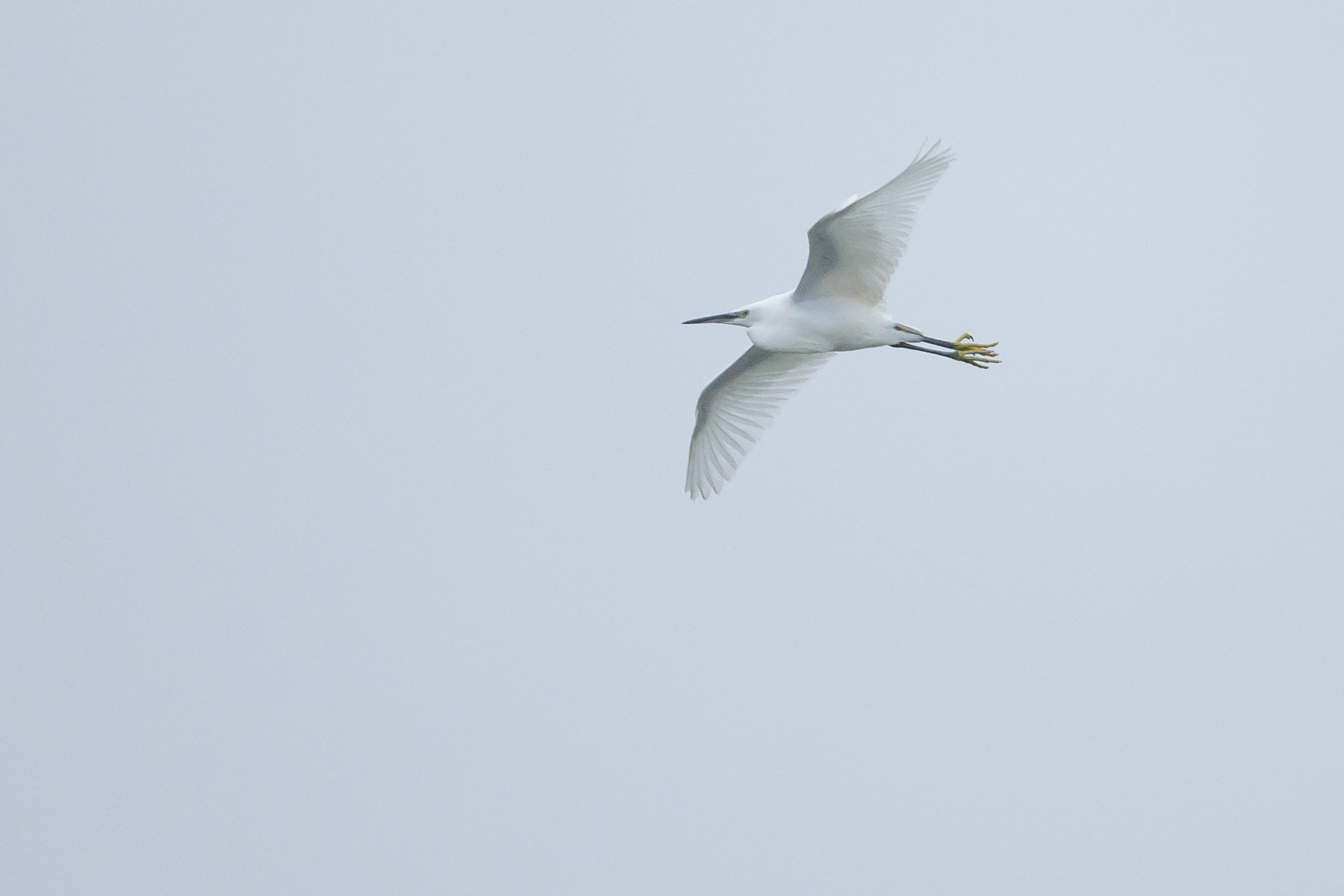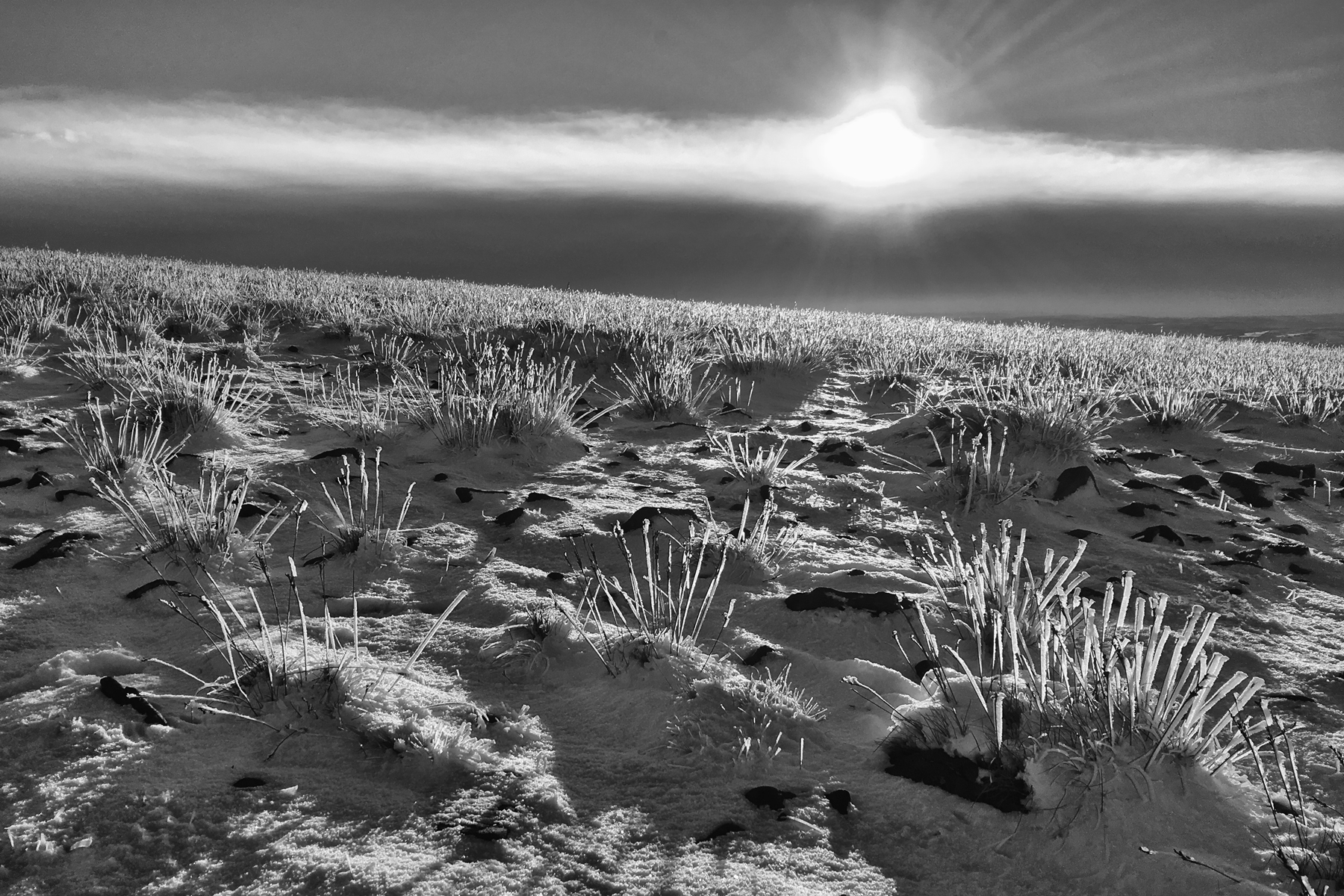WHITE WAGTAIL, PENDLE HILL, 1 MAY 2021
Looking closely at the White Wagtails (that is both subspecies White Wagtail (nominate alba) and Pied Wagtail (yarrellii)) that occur in East Lancashire quickly shows that they vary quite a lot. While the bird on the short turf just above the gate to Pendle Hill (Phil Larkin tells me ‘Pen-dle Hill’ literally means ‘Hill-hill Hill’!) on 1 May looked to have a pale mantle, pale flanks and a fairly sharply demarcated black cap so therefore a White Wagtail right? Yes, of course but I was interested to rule out an intergrade alba/yarrelli and I also remembered there can be some overlapping features, so, without being able to recall all the details, I took some photos and checked them later to Adriaens, Bosman & Els’s paper ‘White Wagtail and Pied Wagtail: a new look’ published in Dutch Birding in 2010, which is the current standard reference. It shows there is more to them than a glance at the identification features mentioned in such as the Collins Bird Guide. Here’s what I think of this bird.
Age/Sex
First of all, it is still in pre-breeding moult so it is scruffy and that ruffled black-centred (adult) greater covert means I can’t see if the outer ones are really brownish or not. The primaries are covered in all photos too. So, it could be an adult or a first summer. I’d be interested to hear from someone who looks at them regularly if there’s anything you can see here that clinches the age. The black cap looks to have a sharp border with the grey mantle, which suggests it is a male.
Subspecific Identification
Here’s an assessment using Adriaens, Bosman & Els’s eight characters. So, a White Wagtail, Motacilla alba alba, and the scores for characters A, F & G lean towards a western i.e. Icelandic bird, as expected. After all it was in good company with lots of other Iceland-bound birds in East Lancs this weekend like wheatears and whimbrels so this wouldn’t be a surprise.
Character A: Kodak grey value of rump (measured in palest parts only)
10 (between the second pair of tertials), putting it comfortably within the range of alba (western 9-14 and eastern 8-13) and outside yarrellii (13+) with some margin for error both in the lightness and artefacts in the image [The area between the third pair of tertials is the darker uppertail coverts]. This area of the rump is typically darker than the rest of the mantle/scapulars in White Wagtail (alba).
Character B: Kodak grey value of scapulars
7, within the range of alba (7-11) and outside that of yarrellii (10-18).
Character C: Kodak grey value of mantle
7, within the range of alba (7-12) and outside that of yarrellii (10-18).
Character D: Estimated amount (%) of black on mantle and scapulars
<5%. However, difficult to assess from these images, the dark-looking feathers on the mantle are sometimes ignored as artefacts but there look to be at least 3 feathers with some dark markings on the LHS of the mantle.
Characters E & F: Kodak grey value of and extent of dark wash on flanks
Kodak grey value: 7, within the range of alba (1-10) and outside that of yarrellii (9-16).
Extent of dark wash on flanks: 1 (eastern alba 17%, western alba 44%, yarrellii 37%). This is a three point scale only (0,1 & 2).
Character G: Number of dark spots on belly
Zero. As in 96% of alba. ‘The presence of several (>1) distinct, isolated dark spots on the belly seems to be a fairly good indication of yarrellii, and it is therefore surprising that this character is apparently not described anywhere in literature.’
Character H: Length of white wedge on inner web of t5
Not visible on any photos.




